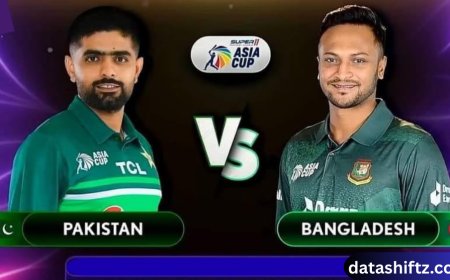Delhi: The Heartbeat of India

Introduction
A City of History and Modernity
Delhi, the capital of India, is a city where history and modernity coexist in harmony. Known for its vibrant culture, political significance, and bustling urban life, Delhi is more than just a city—it is an experience. From ancient monuments to modern skyscrapers, Delhi offers a unique blend of tradition, governance, commerce, and education.
This article explores Delhi’s rich history, geographical and demographic significance, key attractions, cultural diversity, economy, and living standards, offering readers an in-depth understanding of India’s political and cultural epicenter.
Historical and Geographical Significance
Historical Overview
Delhi has a history spanning several millennia, serving as the capital for multiple empires, including:
-
The Delhi Sultanate (1206–1526)
-
The Mughal Empire (1526–1857)
-
British Colonial Period (1803–1947)
The city is home to iconic monuments such as the Red Fort, Qutub Minar, Humayun’s Tomb, and India Gate, each reflecting Delhi’s architectural brilliance and historical importance.
Geographical Location
Situated in northern India, Delhi is strategically located on the banks of the Yamuna River. The city experiences a semi-arid climate with hot summers, a monsoon season, and cool winters. Its geographic location makes it a hub for trade, transportation, and political activities.
Delhi at a Glance
| Attribute | Detail |
|---|---|
| Country | India |
| Area | 1,484 km² |
| Population | ~20 million (as of 2025) |
| Climate | Semi-arid; extreme summers and cool winters |
| Official Languages | Hindi, English |
| Major River | Yamuna |
Culture, Lifestyle, and Demographics
Cultural Diversity
Delhi is a melting pot of cultures, languages, and religions. Festivals such as Diwali, Holi, Eid, and Christmas are celebrated with equal enthusiasm. The city hosts numerous cultural events, music concerts, and traditional fairs, reflecting its cosmopolitan nature.
Demographics
Delhi has a diverse population with a mix of ethnicities, religions, and languages. The demographic profile includes:
-
Hindus: Majority population
-
Muslims: Significant community
-
Sikhs, Christians, Jains, Buddhists: Substantial presence
-
Languages: Hindi, Punjabi, Urdu, and English widely spoken
Lifestyle and Living Standards
Delhiites enjoy a vibrant lifestyle with access to modern amenities, educational institutions, healthcare facilities, shopping malls, and entertainment hubs. Areas like Connaught Place, Saket, and Gurgaon (nearby) are known for urban sophistication, while regions like Old Delhi preserve traditional lifestyles and markets.
Economy, Infrastructure, and Transport
Economic Hub
Delhi is a major economic center in India, contributing significantly to GDP. Key sectors include:
-
Information Technology
-
Tourism and Hospitality
-
Retail and Trade
-
Manufacturing and Handicrafts
-
Government Services and Administration
Delhi’s economy benefits from its status as the political capital and the presence of corporate headquarters, industrial hubs, and financial institutions.
Infrastructure
Delhi boasts modern infrastructure, including:
-
Metro Rail Network connecting major areas
-
International Airport (Indira Gandhi International Airport)
-
Highways linking the city to neighboring states
-
Industrial and IT parks fostering economic growth
Key Infrastructure Highlights
| Infrastructure | Description |
|---|---|
| Metro Rail | Covers 390+ km with multiple lines |
| Airports | Indira Gandhi International Airport |
| Highways | NH-44, NH-48, connecting Delhi to major cities |
| Industrial Parks | Gurgaon, Noida, and Okhla Industrial Area |
| Hospitals | AIIMS, Fortis, Apollo, and numerous healthcare centers |
Transportation and Connectivity
Delhi is one of India’s most connected cities. Apart from the metro, other modes of transport include buses, taxis, auto-rickshaws, and ride-sharing services. The city also serves as a railway and highway hub, linking it to northern, western, and eastern India.
Must-Visit Attractions in Delhi
-
Red Fort – A UNESCO World Heritage Site and symbol of Mughal architecture.
-
India Gate – A war memorial honoring Indian soldiers.
-
Qutub Minar – Tallest brick minaret in the world, built in 1193.
-
Lotus Temple – Famous Bahá'í House of Worship known for its flowerlike architecture.
-
Humayun’s Tomb – Precursor to the Taj Mahal, showcasing Mughal architecture.
-
Connaught Place – Shopping and business hub in central Delhi.
-
Chandni Chowk – Historic market offering traditional food, clothing, and culture.
-
Akshardham Temple – Modern spiritual and architectural marvel.
-
Rashtrapati Bhavan – The President’s official residence, an architectural landmark.
-
Dilli Haat – Open-air market showcasing handicrafts from across India.
Education and Healthcare
Delhi is an educational hub with prestigious universities, colleges, and research institutions:
-
University of Delhi
-
Jawaharlal Nehru University (JNU)
-
Indian Institute of Technology Delhi (IIT Delhi)
-
All India Institute of Medical Sciences (AIIMS)
Healthcare facilities are world-class, with both government and private hospitals providing advanced medical services.
Challenges and Urban Development
Despite its prominence, Delhi faces urban challenges:
-
Air Pollution – High levels during winter months affect public health.
-
Traffic Congestion – Rapid urbanization leads to heavy traffic on roads.
-
Water Scarcity – Unequal distribution of water resources in certain areas.
-
Waste Management – Solid waste and sanitation require improvement.
The government is focusing on sustainable urban development, smart city initiatives, and green projects to tackle these issues.
Conclusion:
Delhi – A City of Contrasts and Opportunities
Delhi is a city that perfectly balances history, culture, modernity, and governance. It is a place where ancient monuments sit alongside glass skyscrapers, where traditions meet innovation, and where local markets coexist with luxury malls.
Whether it’s exploring historical sites, enjoying cultural festivals, pursuing business opportunities, or experiencing a modern urban lifestyle, Delhi offers something for everyone. Its significance as India’s political, cultural, and economic center makes it a city that defines the spirit of the nation.






























